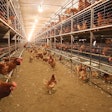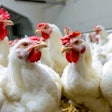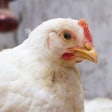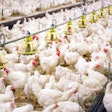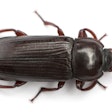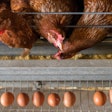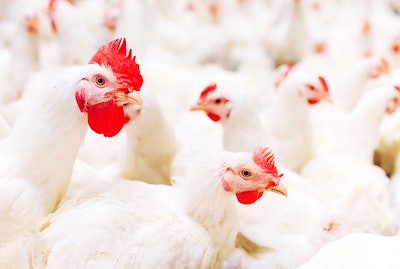
Livestock farming can help reduce greenhouse gas build up in the atmosphere, according to a leading air quality scientist.
As part of the Virtual 2020 Poultry Science Association Annual Meeting, Dr. Frank Mitloehner, a professor and air quality extension specialist at the University of California-Davis’ Department of Animal Science, spoke about how livestock farming is unfairly blamed for its role in global climate change. Mitloehner, who delivered the virtual event’s keynote speech, said livestock farming and intensive agriculture actually plays a role in controlling greenhouse gasses.
The long shadow
A common misperception, often capitalized upon by critics of animal agriculture, is that livestock farming contributes more to global warming than all the world’s transportation activities. This falsehood, Mitloehner said, was promoted by a 2006 report published by the United Nations’ Food and Agriculture Organization (FAO) that claimed livestock and poultry farming contribute 18% of the world’s greenhouse gas emissions.
That figure is incorrect, he said, because it used bad data and faulty math to make that conclusion. The authors of the report have even admitted as much. Nevertheless, the claim remains large in the popular mind and to this day proponents of plant-based eating continue use the faulty argument.
How greenhouse gasses affect climate change
Global climate change is occurring, Mitloehner said, because of an excess build up of greenhouse gasses. Chiefly, these are carbon dioxide, nitrous oxide and methane. These gases build up in the atmosphere and help trap the heat of the sun close to the earth. Without them, life wouldn’t be possible. But, an excess build up of these gases is trapping too much heat and causing the global problem.
The role of methane
Critics of livestock focus on methane, a potent greenhouse gas, and say the gas produced by livestock animals is causing global warming. It is a potent greenhouse gas. However, those critics do not consider the total methane equation.
The earth digests almost as much methane as it produces. Methane is produced by fossil fuel production and use, agriculture and its wastes, the burning of biomasses and natural processes occurring in wetland and other biomes. However, nearly the same amount sinks out of the atmosphere from a chemical reaction known as hydroxylation.
Methane, unlike carbon dioxide and nitrous oxide, does not persist long in the atmosphere. In fact, it oxidizes and falls out of the atmosphere within ten years of emission. The other two gasses remain between 100 to 1,000 years.
The real culprit for climate change, he said, is the burning of fossil fuels for energy. By burning fossil fuels, new and additional carbon which was previously buried deep within the earth is released into the atmosphere in far greater amounts than it can be naturally consumed.
The biogenic carbon cycle
Agriculture assists in removing carbon from the atmosphere as part of the biogenic carbon cycle.
That process begins with photosynthesis, where plants consume carbon dioxide to produce carbohydrates. Livestock is fed with the same plant materials and produces methane as waste. After 10 years, through the hydroxylation process, methane becomes carbon dioxide once again. Therefore, he said, the carbon that is in the methane that comes from livestock is not new and additional carbon being added to the atmosphere.
“If you keep livestock and poultry flocks at even rates … then you are not adding additional new methane,” Mitloehner said. “If you are not adding additional new methane, you are not adding additional new warming.”
Therefore, the carbon produced by animal agriculture is recycled by the same process and animal agriculture doesn’t add new carbon to the atmosphere. Routine human activities, like driving a car, however do add new, additional carbon to the atmosphere which continuously builds up as more fossil fuels are burned.
Livestock as part of a climate solution
Because of this process, if agriculture could find a way to reduce its methane emissions in total it could play a role in cooling the climate and counteracting some of the carbon emissions from fossil fuel burning.
Mitloehner said California is putting that theory in practice by introducing a new methane law mandating a 40% reduction in methane production by 2040. The state’s program works by financially incentivizing methane reduction. In 2018, the state invested $500 million in methane reducing technology for the state’s farmers.
The results are positive so far, he said. California’s dairy farmers, alone, reduced their methane emissions by 2.2 million metric tons. That’s lead to an estimated 25% reduction in greenhouse gas emissions in the Golden State. This reduction, he said, has been achieved through the use of anerobic digesters with manure. These digesters cap and capture methane escaping from manure and produce a methane-rich biogas which can be used as a renewable natural gas source. That renewable natural gas can be used to run vehicles and farm equipment.
“That is the new goldrush in California. It is very highly incentivized and credited if you convert biogas into renewable natural gas,” Mitloehner said. “Our farmers are incentivized to do what’s right, to reduce emissions, and produce utilities such as fuels and its working very well.”






